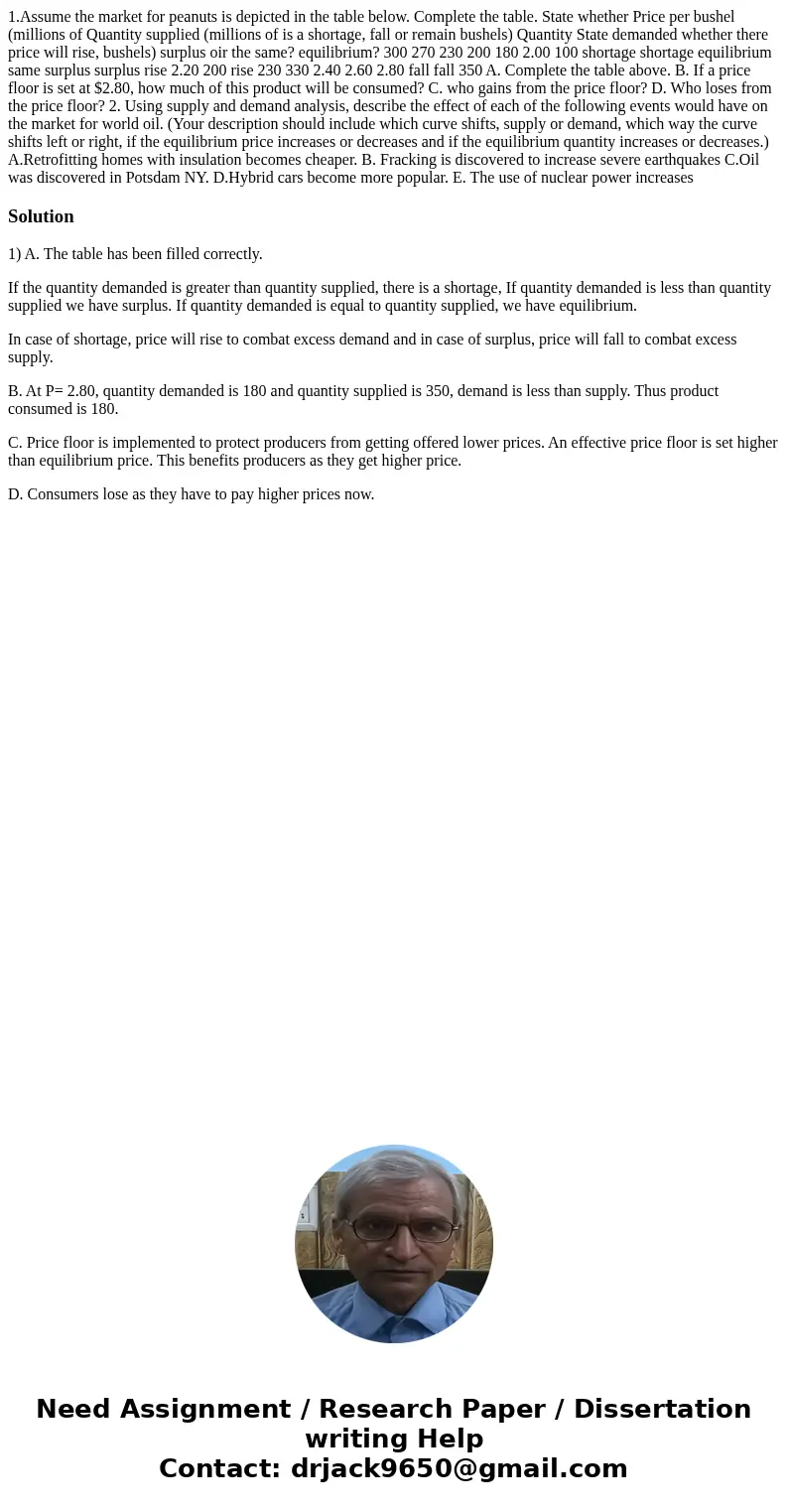1.Assume the market for peanuts is depicted in the table below. Complete the table. State whether Price per bushel (millions of Quantity supplied (millions of is a shortage, fall or remain bushels) Quantity State demanded whether there price will rise, bushels) surplus oir the same? equilibrium? 300 270 230 200 180 2.00 100 shortage shortage equilibrium same surplus surplus rise 2.20 200 rise 230 330 2.40 2.60 2.80 fall fall 350 A. Complete the table above. B. If a price floor is set at $2.80, how much of this product will be consumed? C. who gains from the price floor? D. Who loses from the price floor? 2. Using supply and demand analysis, describe the effect of each of the following events would have on the market for world oil. (Your description should include which curve shifts, supply or demand, which way the curve shifts left or right, if the equilibrium price increases or decreases and if the equilibrium quantity increases or decreases.) A.Retrofitting homes with insulation becomes cheaper. B. Fracking is discovered to increase severe earthquakes C.Oil was discovered in Potsdam NY. D.Hybrid cars become more popular. E. The use of nuclear power increases
1) A. The table has been filled correctly.
If the quantity demanded is greater than quantity supplied, there is a shortage, If quantity demanded is less than quantity supplied we have surplus. If quantity demanded is equal to quantity supplied, we have equilibrium.
In case of shortage, price will rise to combat excess demand and in case of surplus, price will fall to combat excess supply.
B. At P= 2.80, quantity demanded is 180 and quantity supplied is 350, demand is less than supply. Thus product consumed is 180.
C. Price floor is implemented to protect producers from getting offered lower prices. An effective price floor is set higher than equilibrium price. This benefits producers as they get higher price.
D. Consumers lose as they have to pay higher prices now.

 Homework Sourse
Homework Sourse